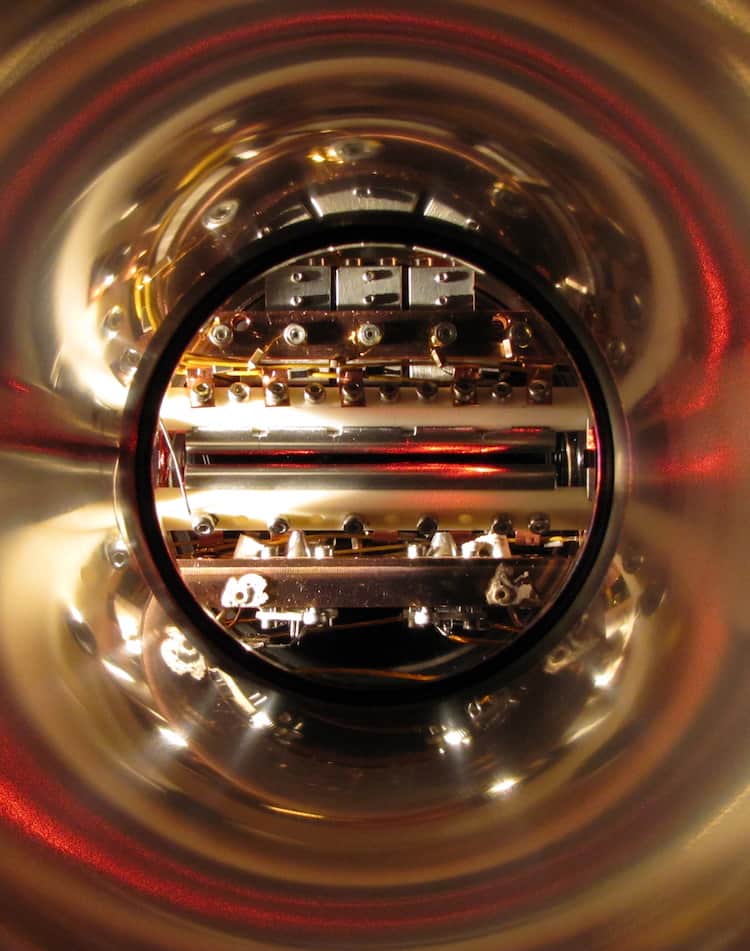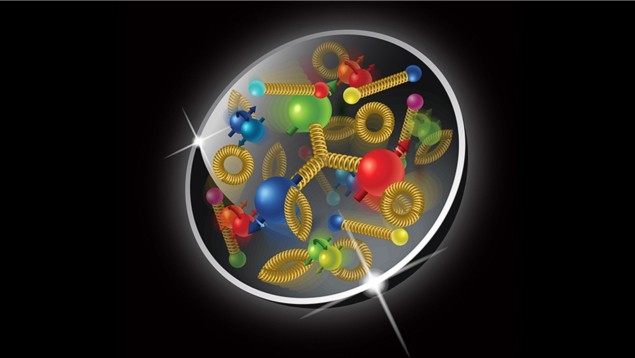Proton contains more anti-down quarks than anti-up
16 Mar 2021
The sea of short-lived particles in the proton has a far higher abundance of anti-down quarks than anti-up quarks, new research has shown. An international team including Paul Reimer of Argonne National Laboratory in the US, discovered the asymmetry by firing a beam of protons at a hydrogen (proton) target at Fermilab. The results shed new light on highly complex interactions within the proton and could lead to a better understanding of the dynamics that unfold following high-energy proton collisions.
The original quark model of the proton is pleasingly simple: two up quarks and one down quark interact with each other by exchanging gluons, which bind the particles together through the strong nuclear force. However, physicists have now known for some time that the full picture is far more complex, with these three “valence” quarks alone only account for a fraction of the proton’s mass. Instead, the proton is now modelled as a roiling “sea” of many quarks, antiquarks and gluons that pop in and out of existence over very short time scales. This makes it very difficult to both calculate the internal properties of the proton and study them experimentally.
In the past, physicists have glimpsed these virtual particles in scattering experiments that measure their probability distributions in relation to the fraction of the total proton momentum they carry. Several theories had suggested that these seas should contain near-identical probability distributions of anti-up and anti-down quarks. Their reasoning is that the masses of both are roughly the same when compared to the total mass of the proton.
Muon and anti-muon pair
Reimer and colleagues tested this idea using the SeaQuest spectrometer at Fermilab. Protons are fired at a proton target. In some collisions, a valence quark in one proton will interact with a virtual antiquark of the same flavour in the other proton. This creates a photon that can transform into a muon and antimuon pair, which can then be detected.READ MORE

Contrary to previous predictions, the researchers found that over a wide range of collision momenta, protons contain a far higher abundance of anti-down quarks than anti-up. The team hopes that these results will generate new interest in several proposed mechanisms for antimatter asymmetry within protons – which had fallen out of favour following previous experimental results.
The result could enable physicists to better interpret the results of high-energy proton collisions at CERN’s Large Hadron Collider. Accounting for antimatter asymmetry could lead to a better understanding of the particles produced by these collisions – including high-mass W and Z bosons which regulate the weak nuclear force.
The research is described in Nature.
Sam Jarman is a science writer based in the UK
from physicsworld.com 22/3/2021

Δεν υπάρχουν σχόλια:
Δημοσίευση σχολίου